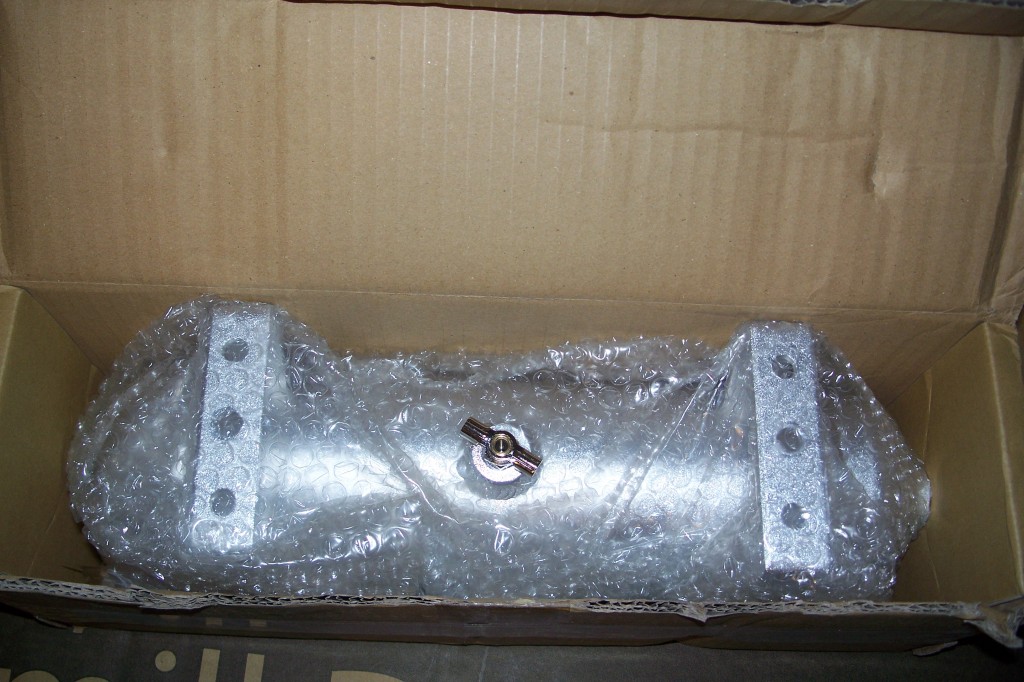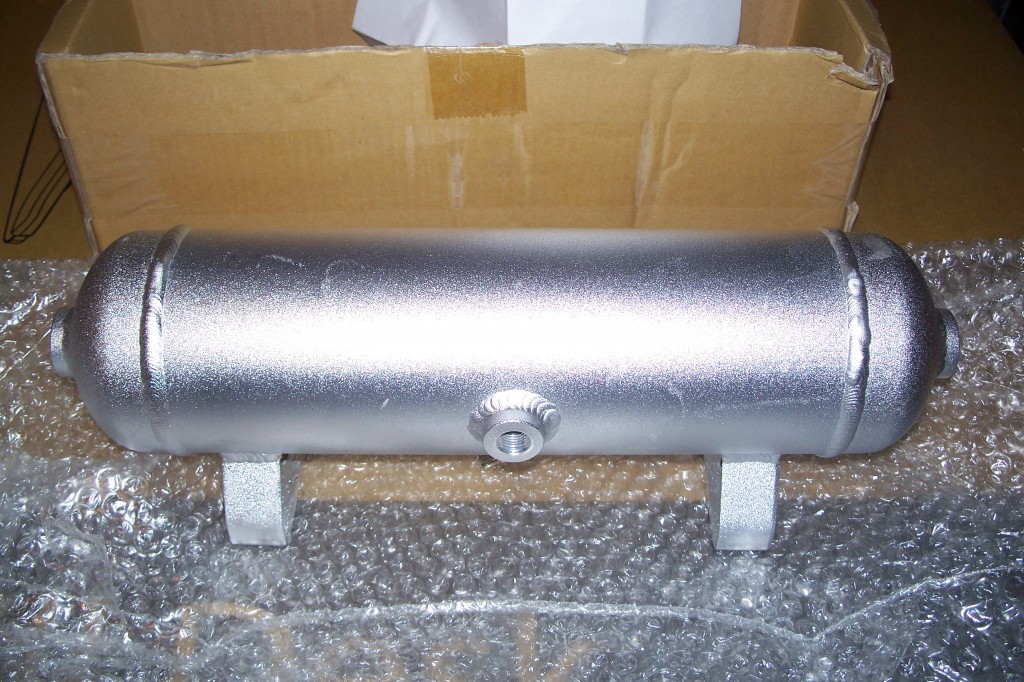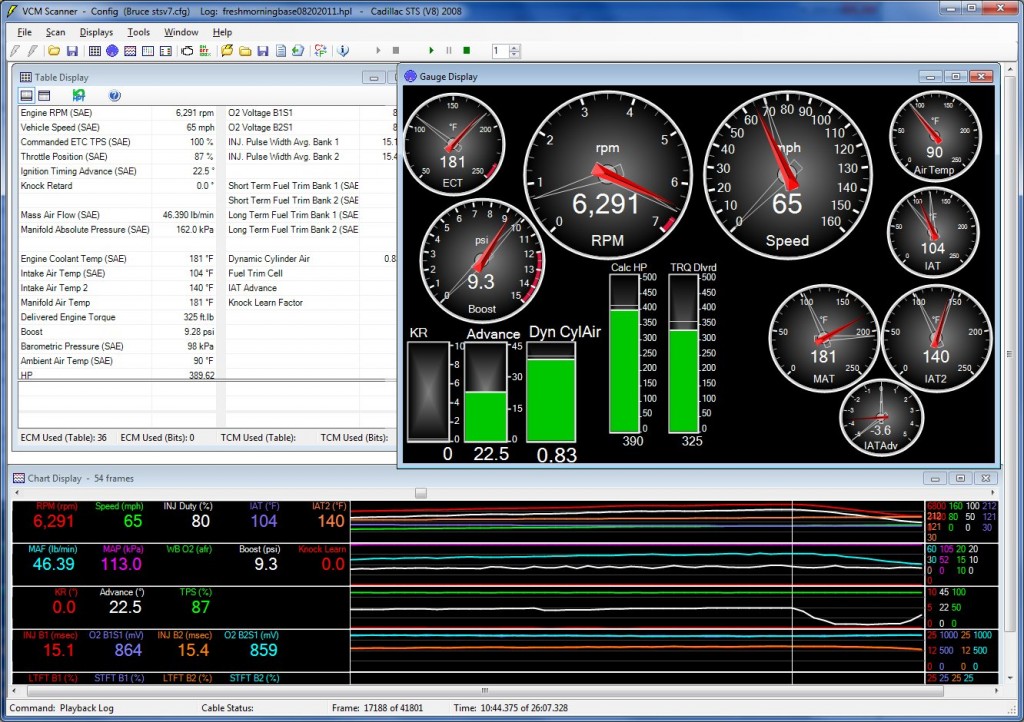Got the AVS tank I ordered in the post today. Very interesting. Previous mention: Cadillac STS-V inline flow-through intercooler tank
I ordered this as a possible inline tank addition to my Cadillac STS-V intercooler coolant loop. Additional coolant would act as a buffer to temperature changes (both up and down). The stock system has 2.6 quarts. My system has the S3TC heat exchanger added, which holds 2 quarts, so it is running 4.6 quarts. The new tank would add 4 quarts, for 8.6 quarts total.
The tank has a drain at the bottom, 1/2″ NPT fittings that handily I have 1/2″ NPT to 3/4 inch hose barbs from my 45321 experiment to fit, and a 1/4″ NPT fitting for a gauge which I will either stick a stopper in or a temp gauge.
I will have to decide whether to add the tank during in this weekend’s big install adjustments session, or wait and test with the new Spectre hoses in place first so I have a clean baseline, then redo the circuit with the tank in place. Notionally with the angle brackets on the bottom, this tank would just sit directly on top of the S3TC. Choices are good.
Update:
This temperature gauge, with 1/2″ NPT fitting, 2″ probe length, and 0-220F temperature scale could work and hopefully be visible through the grill on close examination. Hmm.





